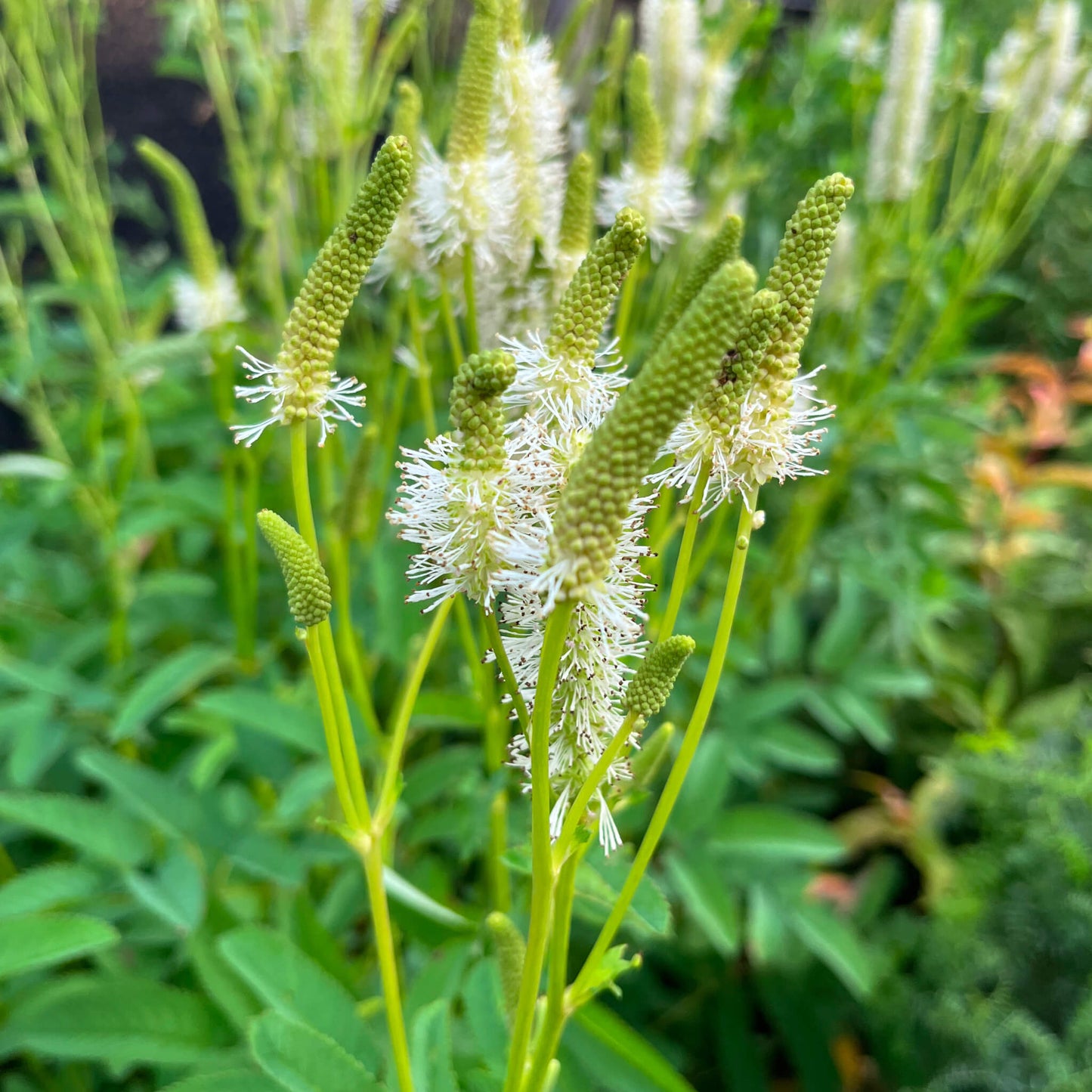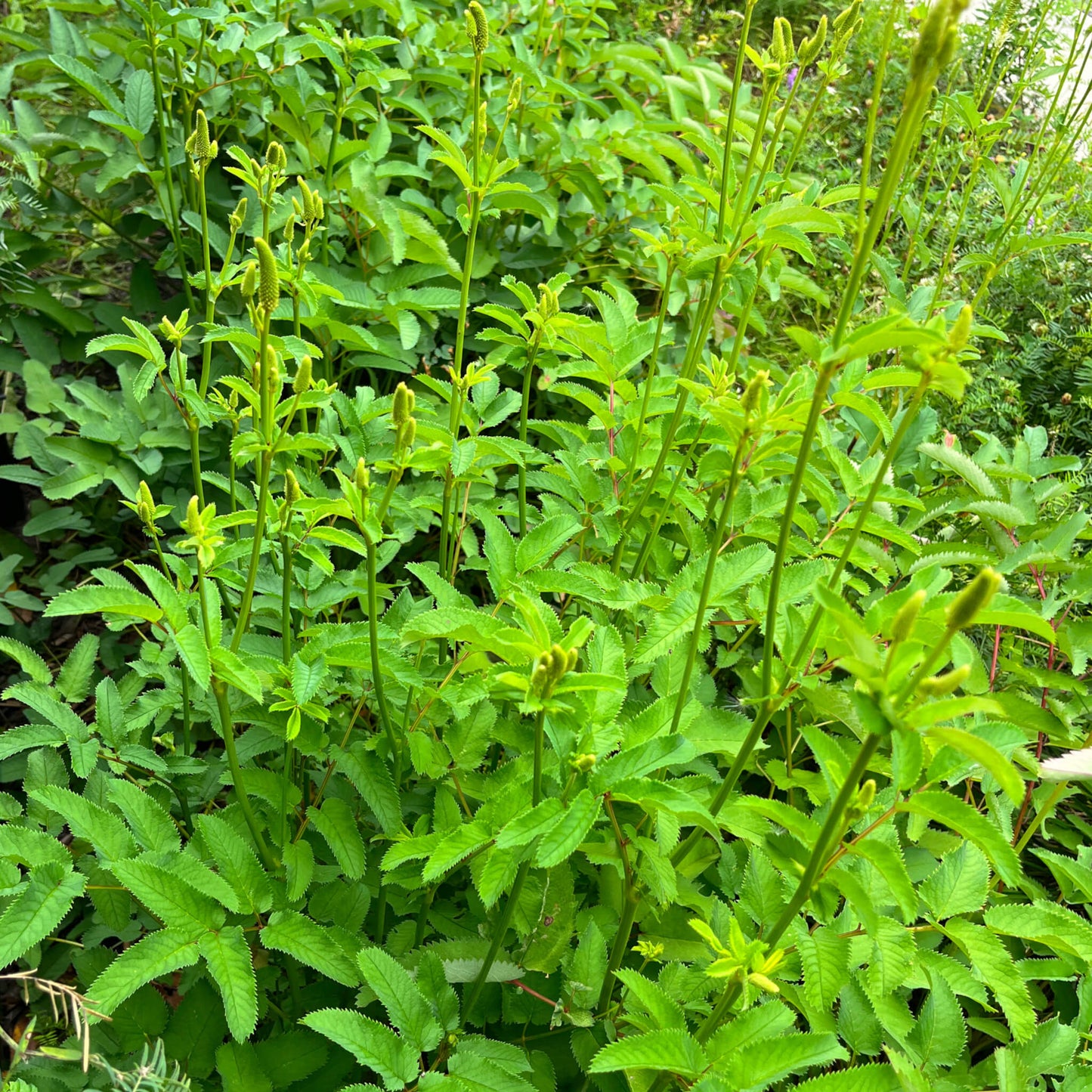This site is protected by hCaptcha and the hCaptcha Privacy Policy and Terms of Service apply.
For successful seedlings,
see the growing notes at the bottom of the page!
Canada burnet (Sanguisorba canadensis) is an elegant perennial native to wet environments, ideally suited for pond edges, streams, and marshes. It pairs beautifully with sedges and grasses, adding a light, whimsical touch to landscape designs. Its finely serrated foliage is complemented by creamy white flower spikes, ranging from 3 to 15 cm in length, blooming from base to tip. Though rare in the Montreal area, this species is endangered in several U.S. states but remains abundant in eastern Quebec.
Medicinal and Culinary Uses
Canada burnet has astringent and anti-inflammatory properties. Traditionally, its roots and leaves were used to treat bleeding, wounds, and minor inflammations.
Ecological Roles
Canada burnet plays an essential ecological role by supporting various pollinators drawn to its nectar-rich flower spikes. It is an ideal choice for naturalistic gardens and riparian plantings, where it stabilizes wet soils and contributes to aquatic ecosystem biodiversity. Cultivating this species helps protect a native plant that is endangered in some areas while providing a food source for pollinating insects.
Canada burnet seeds require cold stratification to ensure germination. See the cultivation notes below for more details.
Akène cannot assume any responsibility for the use of plants for therapeutic purposes. Always seek advice from a professional before using a medicinal or edible plant.
Sowing and Growing
Technical Details
Seeds per packet: 150
Family: Rosaceae
Scientific name: Sanguisorba canadensis
Life cycle: Perennial
Hardiness zone: 3
Soil type: Loamy to clayey
Soil moisture level: Humid to wet
Soil - additional attributes:
Light: Sun, part shade
Blooming: July to September
Spacing: 60 cm
Height: 150 cm
Deer resistance: Low
Stratification: 60 days
Scarification: No
Germination time: 15 to 20 days
Sowing depth: 3 mm




